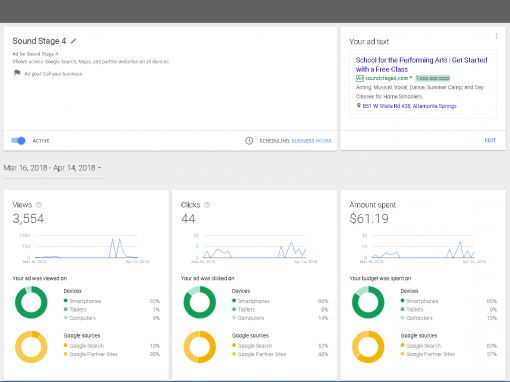

- #ADWORDS EDITOR DASHBOARD HOW TO#
- #ADWORDS EDITOR DASHBOARD UPDATE#
- #ADWORDS EDITOR DASHBOARD OFFLINE#
Facebook’s new reporting tool does a great job in making data accessible and easy to find. Any metric can be added or taken away, which leaves a report that is tailored to the user’s needs. Once again, Facebook has taken a page out of Google AdWords’ book and has allowed users to create customizable reports. If the user needed a combination of information from different reports, both reports had to be downloaded and manually combined. In the past, there were only specific reports that could be created (such as “Advertising Performance” and “Actions by Impression Time”). While the change in reporting has been out for a little longer than the other changes we’ve discussed, it’s worth mentioning because of the role it plays in finding data faster. While this change may seem small, it plays a huge role in making sure the marketer has control over what is spent on a specific ad, without sacrificing account organization. This allows users to tie specific budgets to specific ads without having to create multiple campaigns. This meant that the amount spent on ads within a campaign was in the hands of Facebook.įacebook has now given a little power back to marketers by allowing them to set the budget at the “Ad Set” level instead of the “Campaign” level. In the past, budgets were set at the “Campaign” level. Budgets Tied to Ad Setsīy expanding on the new Ad Sets, Facebook has changed how you manage the budget within an account.
With the inclusion of Ad Sets, marketers can look forward to a less cluttered, more structured experience within the Facebook Ad dashboard. Now, ads can be separated into groups based on demographics, geographic information, and interests. Diving into a campaign no longer brings users to a long list of ads. What Facebook has done is create a third level in the middle, called the “Ad Set,” which allows users to group ads based on targeting parameters within a campaign and ultimately results in a better sense of organization. In the past, Facebook has relied on two levels of organization for accounts, which consist of a “Campaign” level that contained multiple ads in the “Ad” level.
#ADWORDS EDITOR DASHBOARD UPDATE#
Marketers with knowledge of the Google AdWords’ organizational structure will find this update familiar. This is, without question, the biggest change to the Facebook dashboard. Today, we’ll walk you through a few of the improvements to the Facebook Ad dashboard and discuss how they can help marketers find data faster. Even worse, the organizational structure made finding specific ads difficult, especially for large campaigns with many ads. In the past, finding specific data was a sluggish process. To the delight of marketers everywhere, the dashboard overhaul has included many features that the interface desperately needed.

Google AdWords Editor installs politely but leaves a folder behind upon removal.Recently, Facebook began rolling out its new and improved advertising dashboard.
#ADWORDS EDITOR DASHBOARD OFFLINE#
It's a great choice if you want to work on your campaigns offline and add some useful features to the AdWords experience. But anyone with even minimal experience with AdWords should find the program to be pretty intuitive and easy to use. If you're new to AdWords, don't expect Google AdWords Editor to walk you through the whole process of creating a campaign you'll need to look elsewhere for guidance.
#ADWORDS EDITOR DASHBOARD HOW TO#
An online Help file provides plenty of guidance on how to use the program. If you have AdWords data stored in a spreadsheet, it's easy to import it into the program as a CSV file. We liked the ease with which Google AdWords Editor let us make large-scale changes to our campaigns, editing multiple keywords at once. You can manage keywords, placements, audiences, ads, ad groups, and extensions with the program, and statistics can optionally be downloaded and displayed as well. We easily signed in to our AdWords account and loaded our data into the program if you have multiple accounts, it's easy to sign into all of them and then select the one you want to work with from a drop-down menu. The program's interface is plain and utilitarian, with its major features arranged in tabs. There's no guarantee that it will improve the success of your ad campaign, but it can at least make the whole thing a little easier to deal with. Google AdWords Editor is a simple tool that lets AdWords users manage their campaigns on their desktop.

Google AdWords can be a powerful form of advertising, placing ads for your business right next to related Google search results-if you do it right.


 0 kommentar(er)
0 kommentar(er)
